Conard Engineering Students Have Successful Launch of Weather Balloon

Audio By Carbonatix

Getting the balloon ready. Photo credit: Ronni Newton
Students from Conard High School in West Hartford launched a weather balloon on Thursday, and after several hours, it landed and was recovered at Stanley Golf Course in New Britain.
By Ronni Newton. Photos by Ronni Newton, Hunter Marotto and Anthony Truss. Video by John Lyons
Twenty-three students, freshmen through seniors, gathered in the parking lot outside Conard High School’s gym just before noon on Thursday, helping teacher Anthony Truss fill a giant white weather balloon with helium to the proper weight.
At approximately 12:15 p.m., after a countdown, the balloon was released, soaring into the sky before it became indistinguishable from the somewhat low deck of white clouds.
Although the balloon was no longer visible with the naked eye, the students in the engineering applications class were able to track it, as it ascended for the next two hours, reaching an altitude of 115,035 feet (nearly 22 miles above the earth) before bursting and spending another hour falling back to earth.
The balloon recorded a temperature as cold as -54ºC (-65.2ºF) and at its fastest was traveling 196 mph.
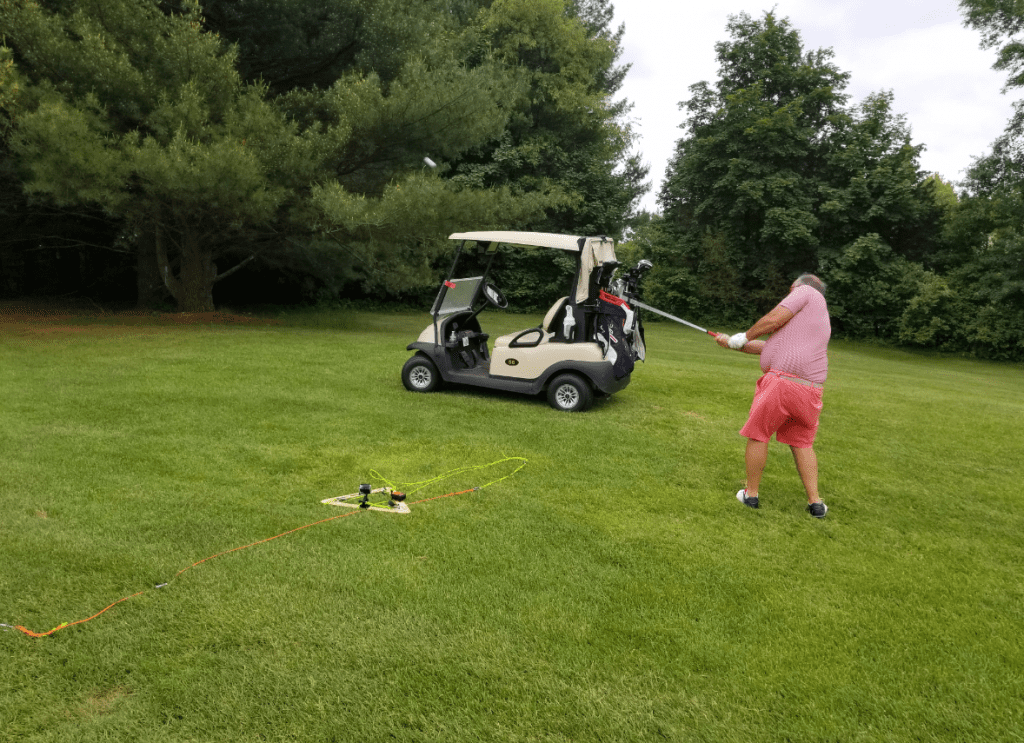
The weather balloon landed on Stanley Golf Course in New Britain, just missing a golf cart and a golfer. Photo courtesy of Anthony Truss
“It landed on the fourth link of the Stanley Golf Course past Costco; almost on a golf cart,” Truss said after he had retrieved the weather balloon. The location and timing of the landing was nearly exactly what had been forecast.
The balloon’s trajectory took it from Conard’s parking lot in West Hartford, northeast and across the Connecticut River into East Hartford and to the outskirts of Glastonbury before it turned and headed due west toward Bristol. It turned to the south, curved back around and headed east, and then in nearly a perfect figure eight crossed back over its path into New Britain where it landed.
Truss had not planned to launch the balloon this week, but decided it was the perfect time based on the weather forecast – relatively stationary upper-level winds controlled by the presence of Tropical Storm Alberto.
“We looked at the weather patterns,” said senior Robert Seecharran, a student in Truss’ class. The forecast indicated that the balloon would land near West Hartford, so the decision was made to launch.
“We can see the altitude, temperature, what the weather is up there,” said Sam Loudon, a sophomore in the class. He said that each student in the class was originally going to plan an experiment to attach to the balloon, but the compressed timeframe didn’t permit that.
All of the students designed a prototype for the frame to hold the balloon’s equipment, and then the class voted on the one they thought was best. The CNC router was used to create the frame.
Sophomore Jonathan Ho’s design for the frame was the one chosen by Truss. Like others it was a triangle. “I instead put the holes for the carabiners inside rather than outside,” he said.
The project was really rewarding. “Challenging, but not frustrating,” Ho said. Other class projects have included making prosthetic hands, learning to use SolidWorks, and using a CNC (computer numerical control) router.
The class also used the CNC to make solid wood toy trucks that were then donated to Toys for Tots.
The best part is learning about things, Ho said.”Not the results but the experience of making it.”
Truss and his students were able to track the balloon on its journey, as was anyone else who had a smartphone or computer.
“Mr. Truss heard I was a HAM radio operator,” said Dr. Rick Araya, a local chiropractor who is also a Conard parent. He was able to set up the tracking for the balloon through Automatic Packet Reporting System (APRS).
Truss explained that one of the pieces of equipment being towed by the balloon was a Stratocast. “The radio beacon goes up to approximately 25o miles in the proper conditions,” he said, and it sent the signal that could be tracked online through the APRS.fi site located in Finland.
The balloon also had a GoPro camera and GPS tracker attached to the frame.
One major challenge was that launching the weather balloon “is a project that doesn’t require 23 people,” said Truss. So they broke it up into sections and worked in groups. Each group built a segment of the line that attached the balloon to the frame.
“This is the sixth year launching balloons,” Truss said. He started it just with a club to be sure it work before making it a class project, and was successful on the second attempt. “The first landed in the ocean,” he said.
Truss, who graduated from Conard, has been teaching for 14 years, 10 of those for West Hartford Pubic Schools.
Most of the materials for the project are procured through Amazon, Truss said. The cost of a 1,200-1,500 gram balloon is about $200, and about $300 worth of helium is needed to fill it. The project is paid for through a Perkins Grant, which nationally funds STEM initiatives, Truss said.
Truss’ Conard students also collaborate with students at Smith STEM School, and next Friday the entire elementary school will be outside as a balloon is launched at Smith.
The main objective of the balloon launch is “understanding a complicated, multi-faceted project such as this, with lots of components,” Truss said. The students get the experience of planning a large project, from having no idea how to do it at the beginning through the end product. It has taken them most of the fourth quarter, and they also learned about latitude, longitude, altitude, and conversion of minutes and seconds to decimals.
“They should be able to understand how a GPS works, and understand the earth itself,” said Truss.
“There’s so much pseudo-science out there, it’s nice to keep them grounded,” he said. The photos from the balloon’s camera clearly shows the earth’s curve.
Although the balloon nearly got away while it was being inflated, and a brief period of panic ensued, someone was able to grab the balloon and reattach it.
Other than that, in Truss’ words the project was a “textbook successful forecast, launch, and recovery.”
Like what you see here? Click here to subscribe to We-Ha’s newsletter so you’ll always be in the know about what’s happening in West Hartford!
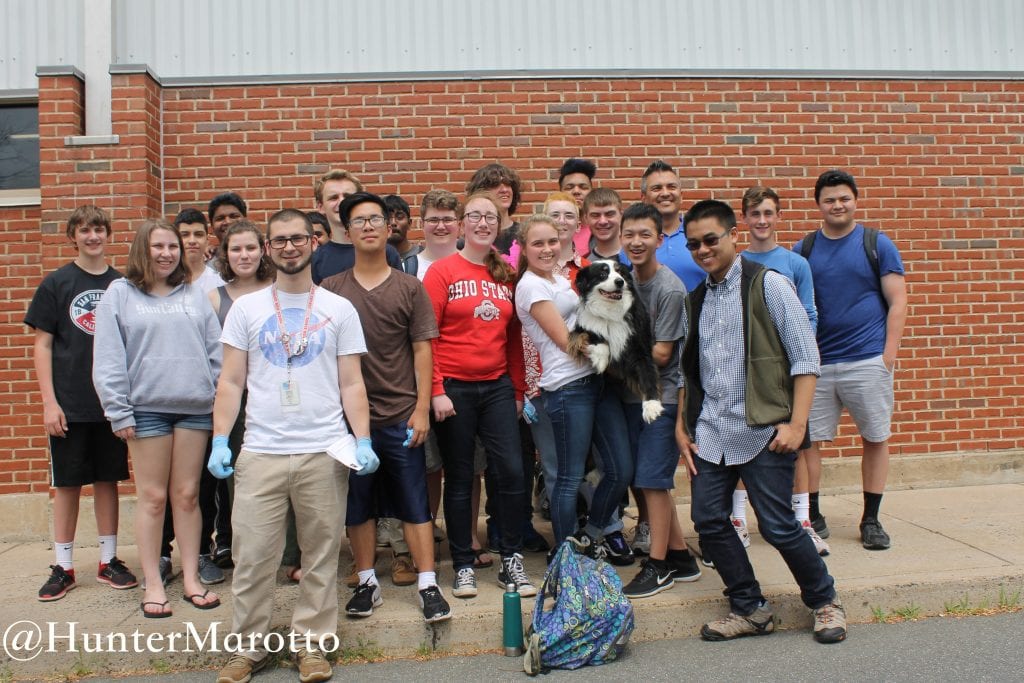
Engineering Applications class with teacher Anthony Truss (front, in white shirt), Dr. Rick Araya (back row third from right), and Araya’s dog after the successful balloon launch. Photo credit: Hunter Marotto
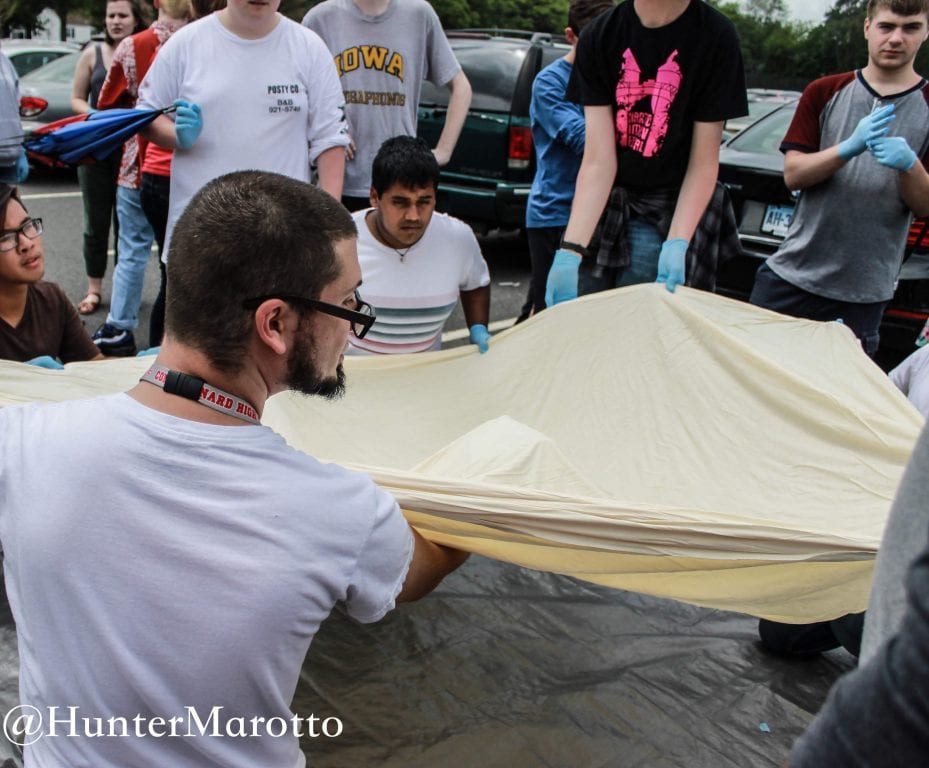
Conard teacher Anthony Truss works with students to get the balloon set up to be inflated. Photo credit: Hunter Marotto
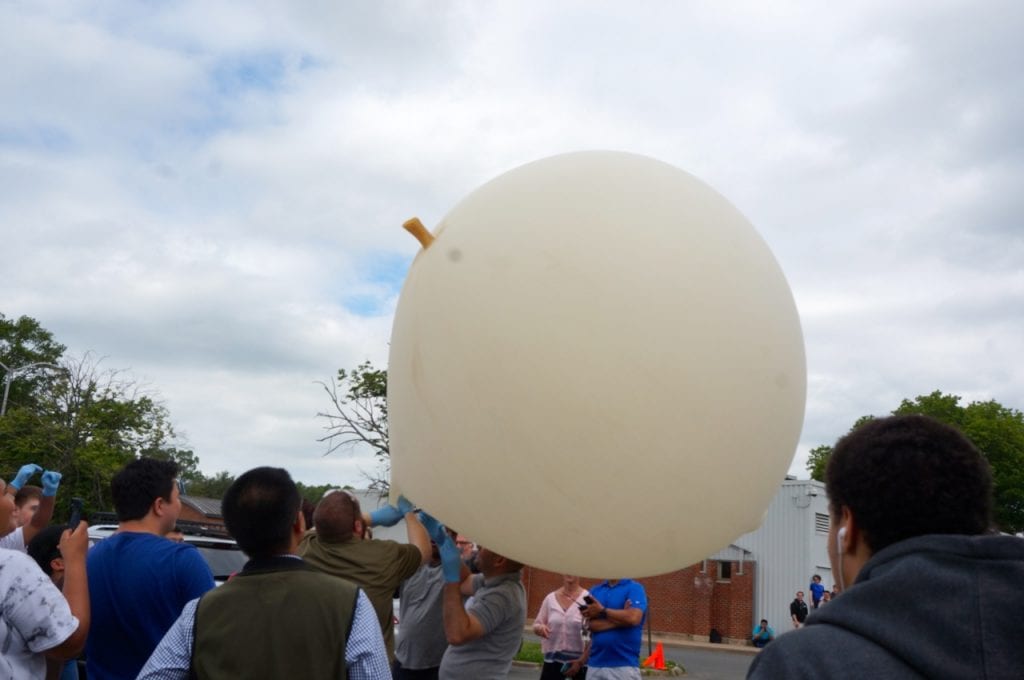
The balloon nearly flew away while it was being filled. Photo credit: Ronni Newton
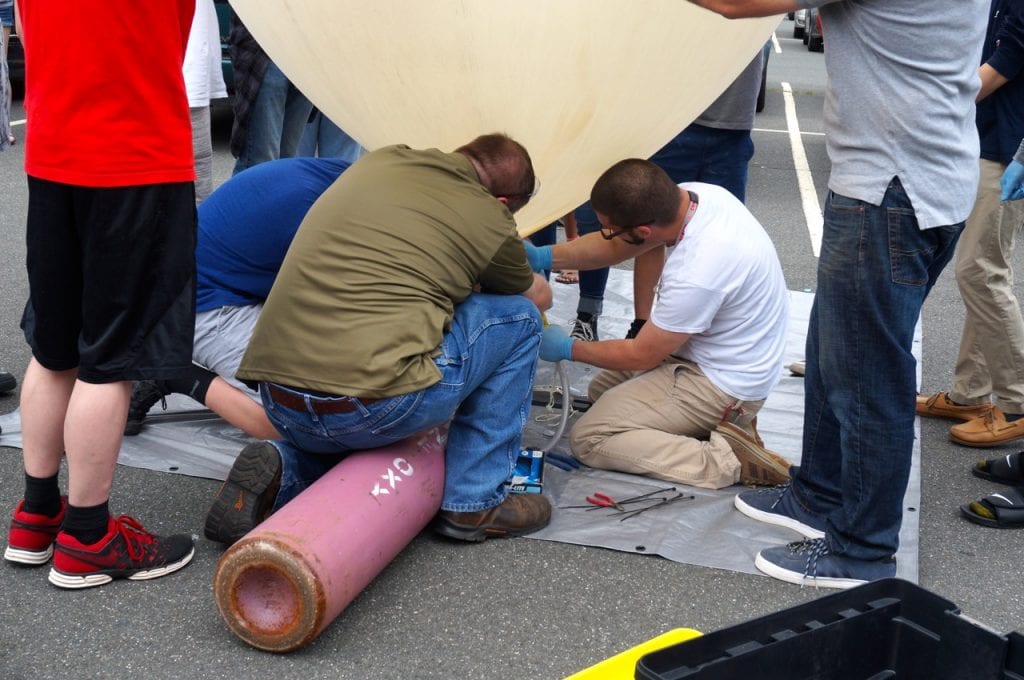
Filling the balloon after its near escape. Photo credit: Ronni Newton
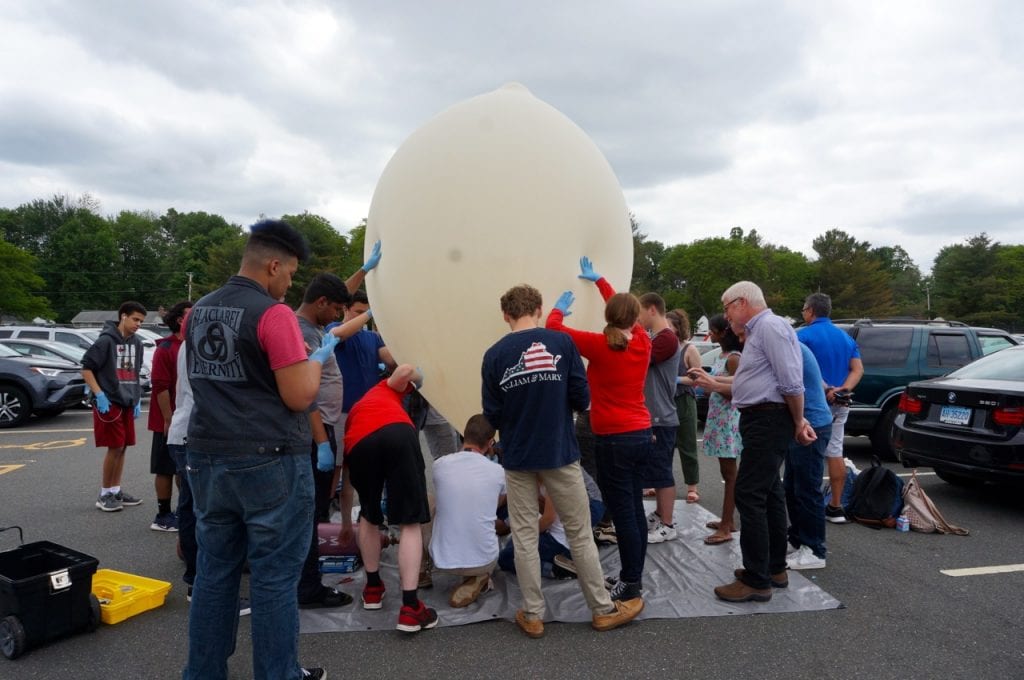
Getting the balloon ready. Photo credit: Ronni Newton
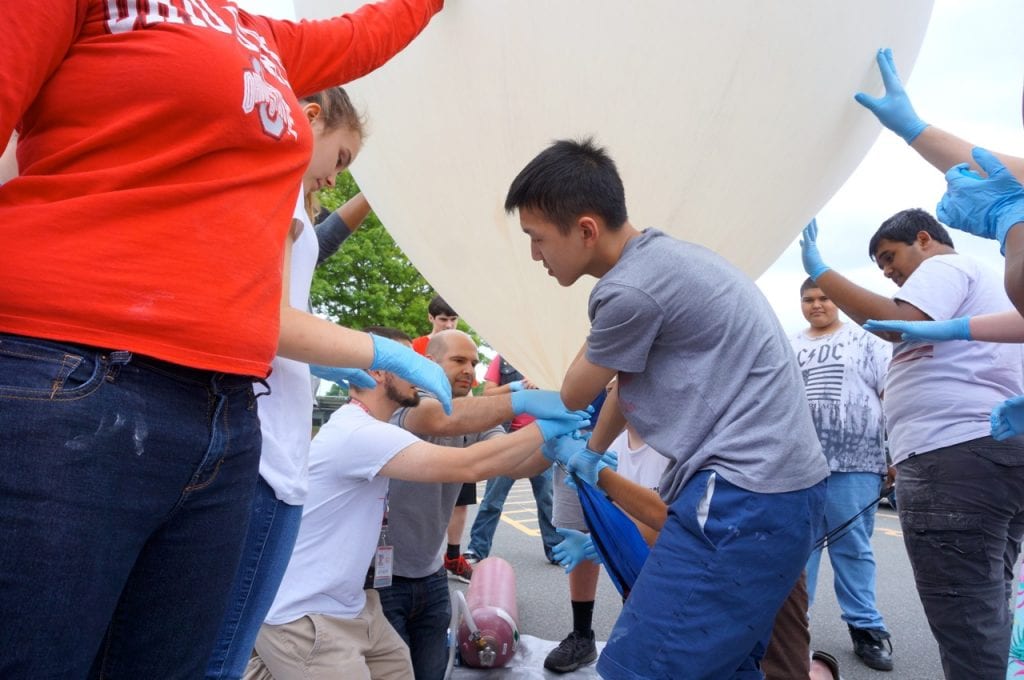
Filling the balloon with helium. Photo credit: Ronni Newton
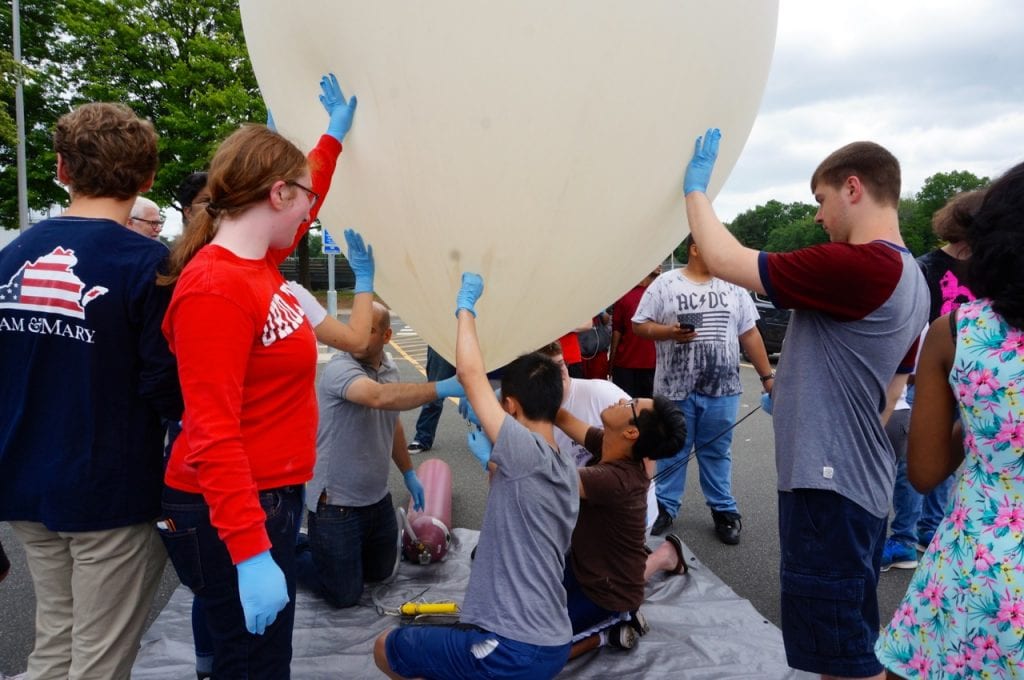
Preparing to launch the balloon. Photo credit: Ronni Newton
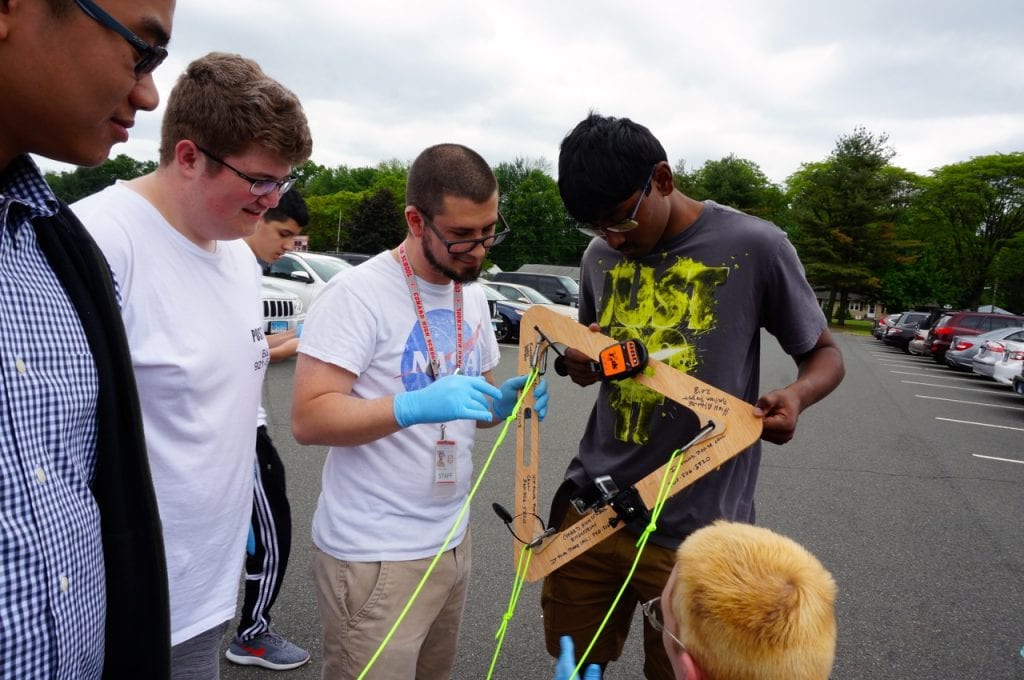
Teacher Anthony Truss checks the equipment. Photo credit: Ronni Newton
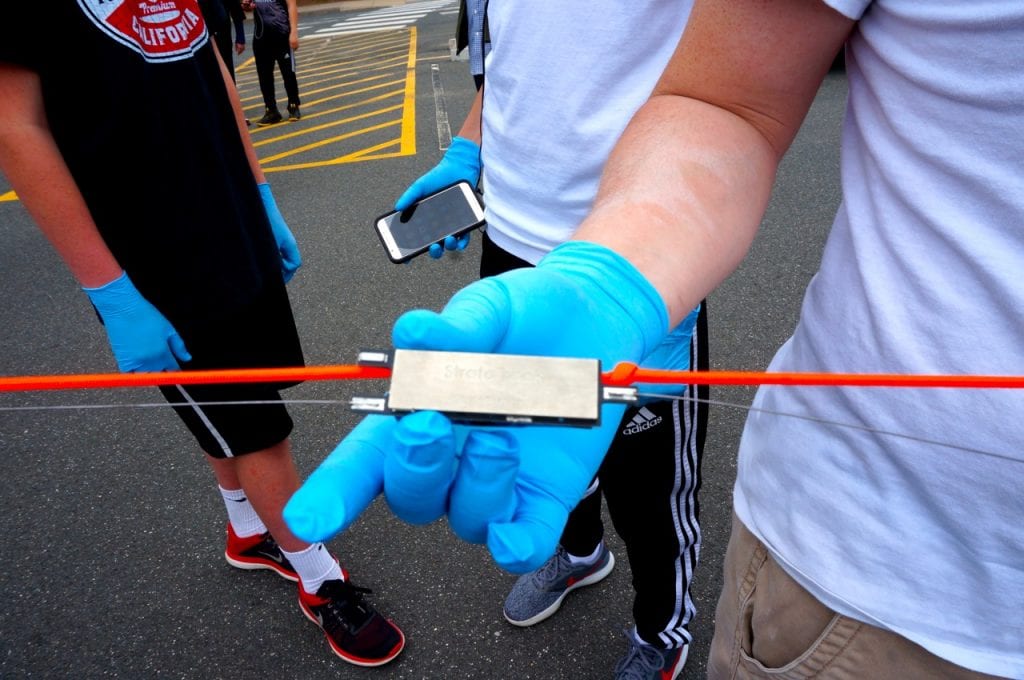
A stratocast relayed information that was tracked by APRS.fi. Photo credit: Ronni Newton
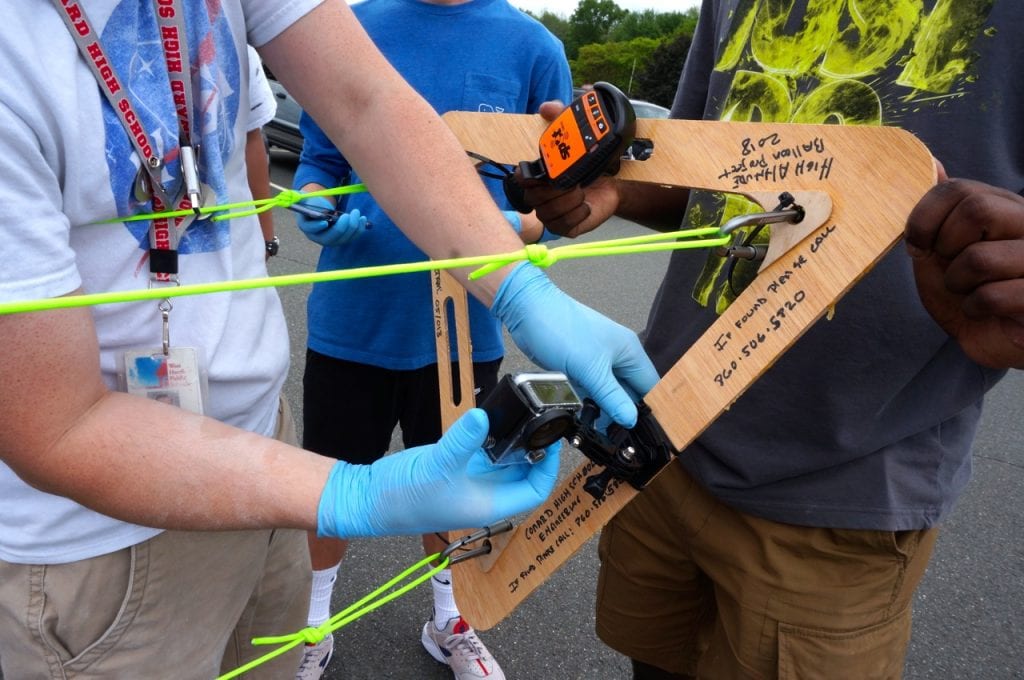
Checking the camera. Photo credit: Ronni Newton
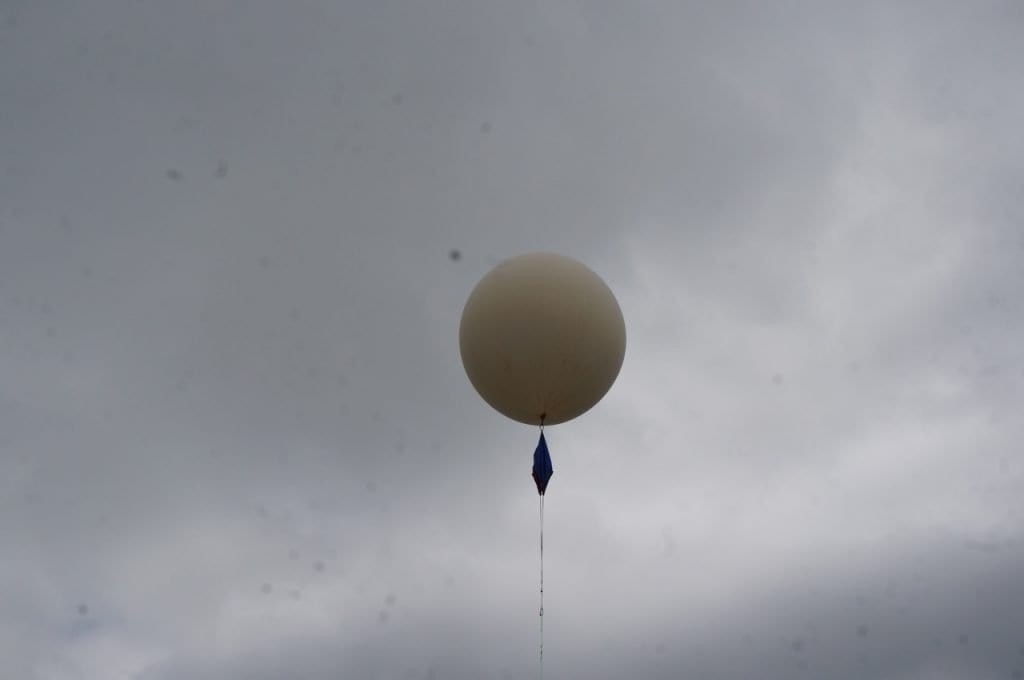
Balloon launched. Photo credit: Ronni Newton
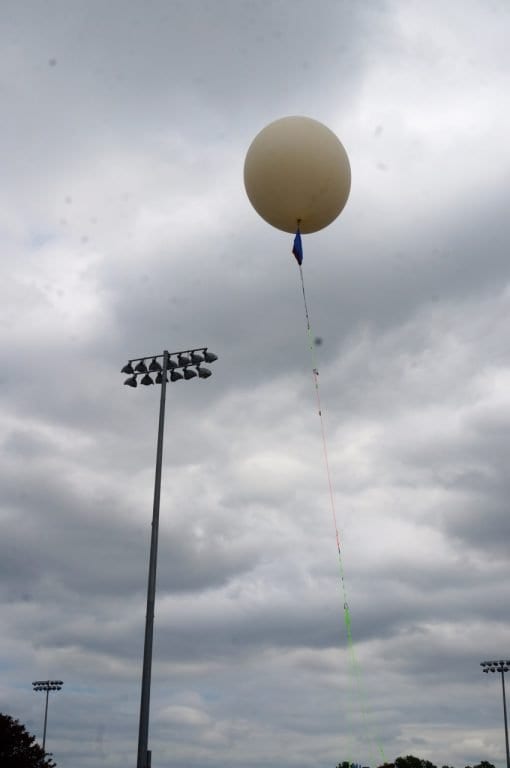
The balloon soared over the football field at Conard. Photo credit: Ronni Newton
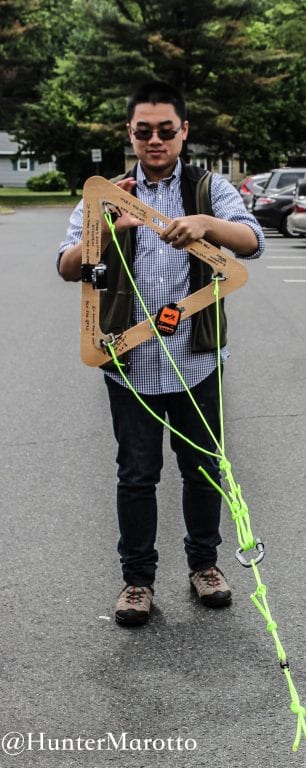
Student Jonathan Ho holds the frame he designed, which was the one chosen for use with the weather balloon. Photo credit: Hunter Marotto
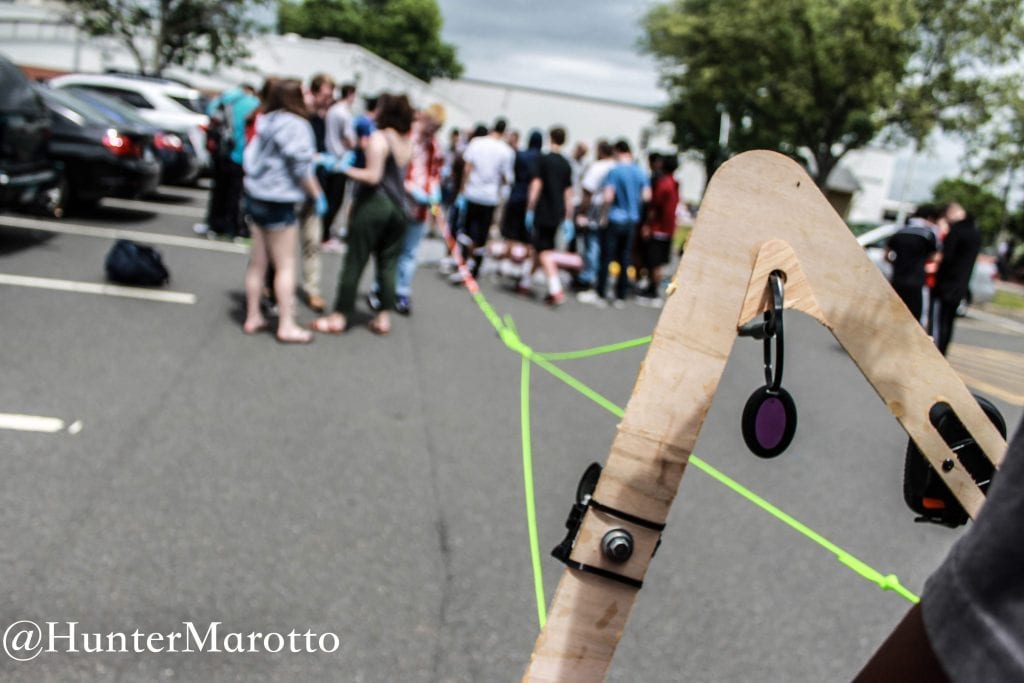
Frame attached to the weather balloon. Photo credit: Hunter Marotto
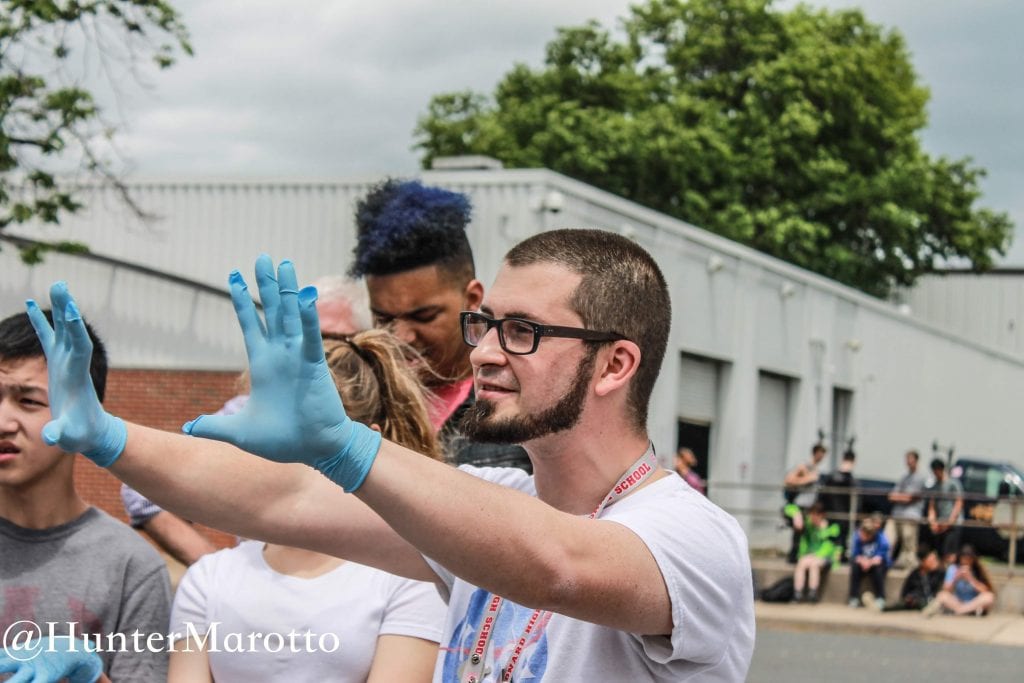
Conard teacher Anthony Truss speaks to his students. Photo credit: Hunter Marotto
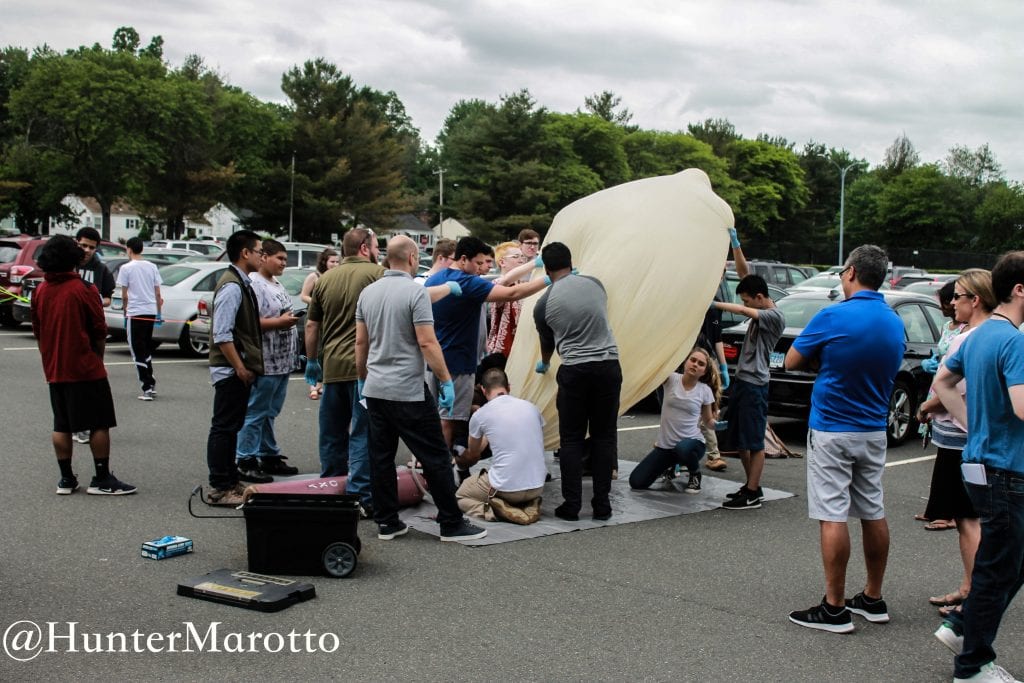
Helium is used to inflate the weather balloon. Photo credit: Hunter Marotto
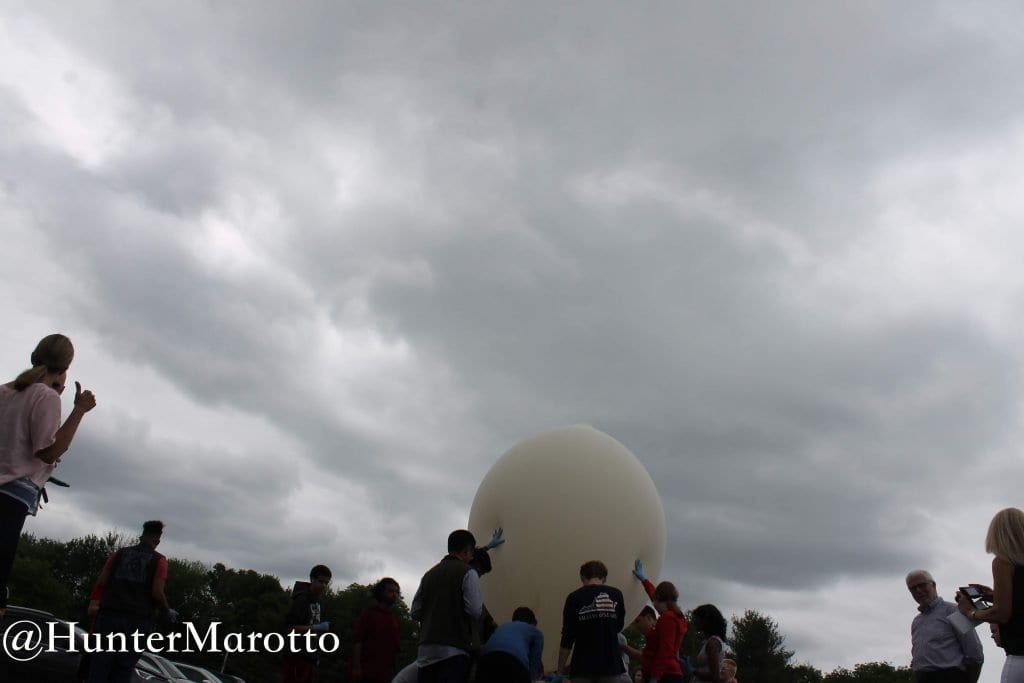
Balloon launch. Photo credit: Hunter Marotto
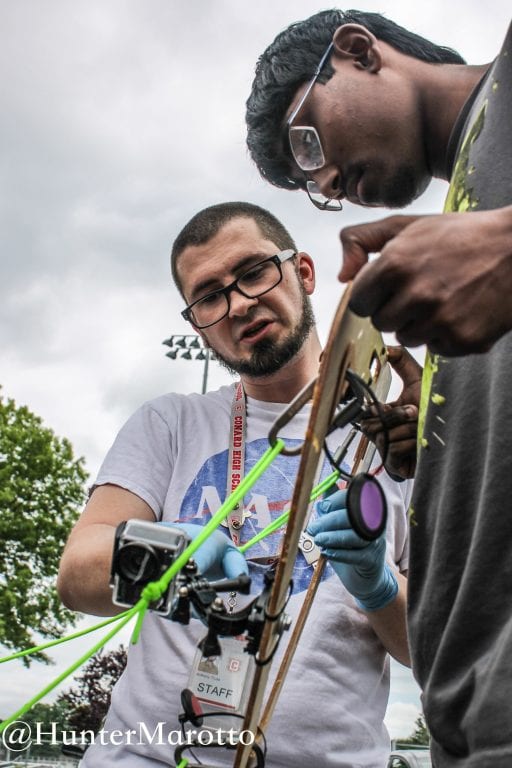
Teacher Anthony Truss works with student Robert Seecharran on attaching the lines to the carabiners on the frame. Photo credit: Hunter Marotto
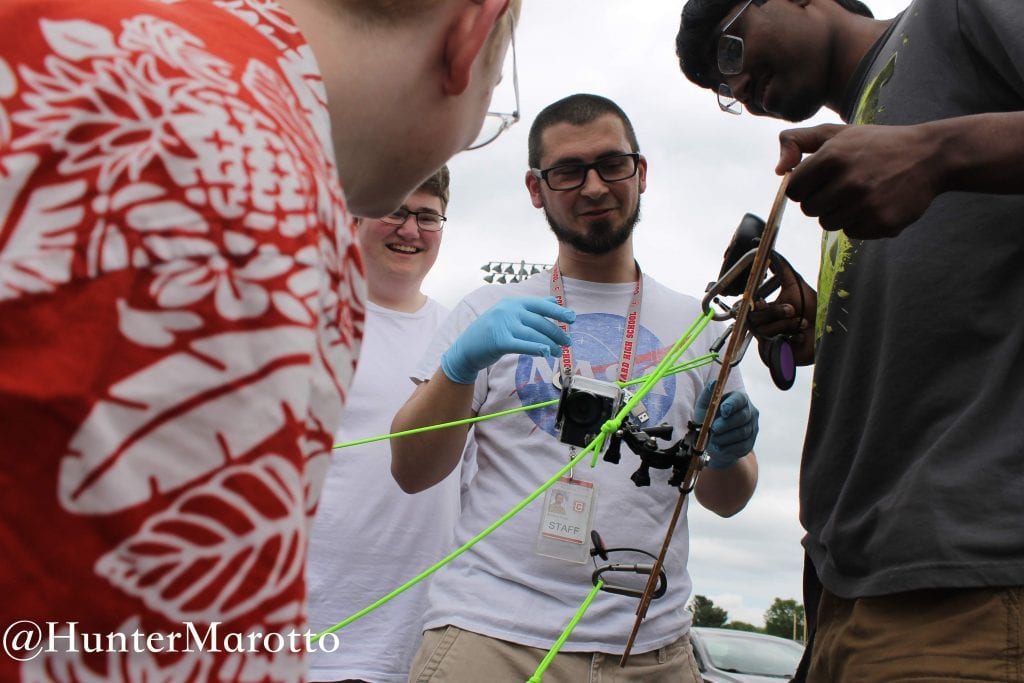
Weather balloon launch. Photo credit: Hunter Marotto
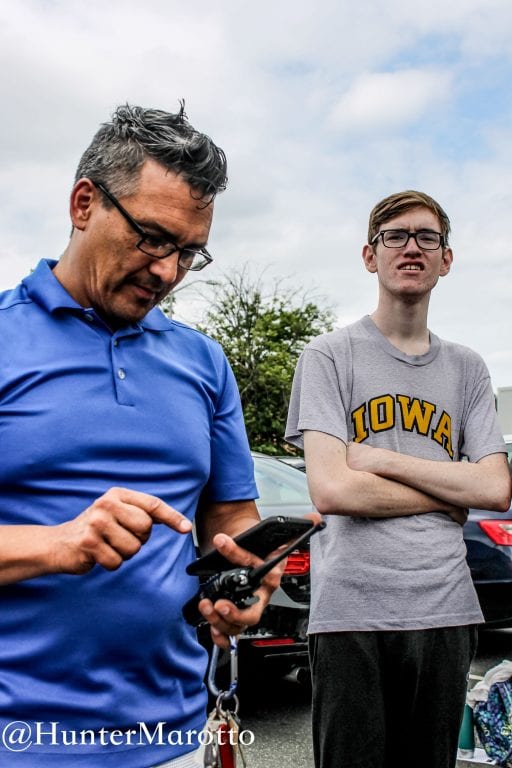
Conard parent, Dr. Rick Araya (left) is a HAM radio operator and set up tracking for the balloon on APRS.fi. Photo credit: Hunter Marotto
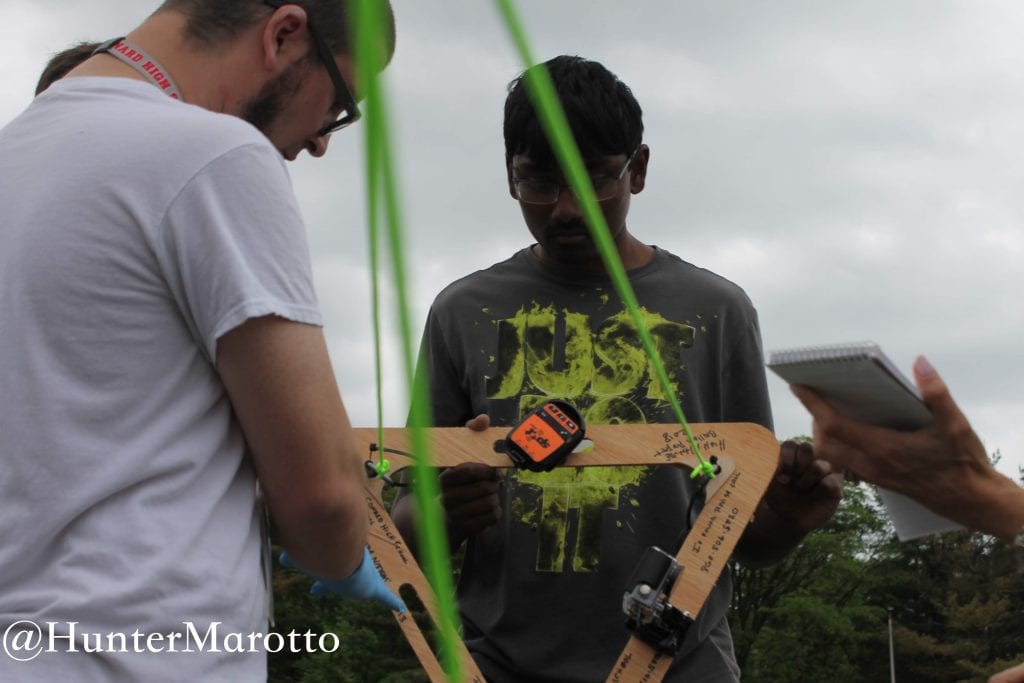
Photo credit: Hunter Marotto
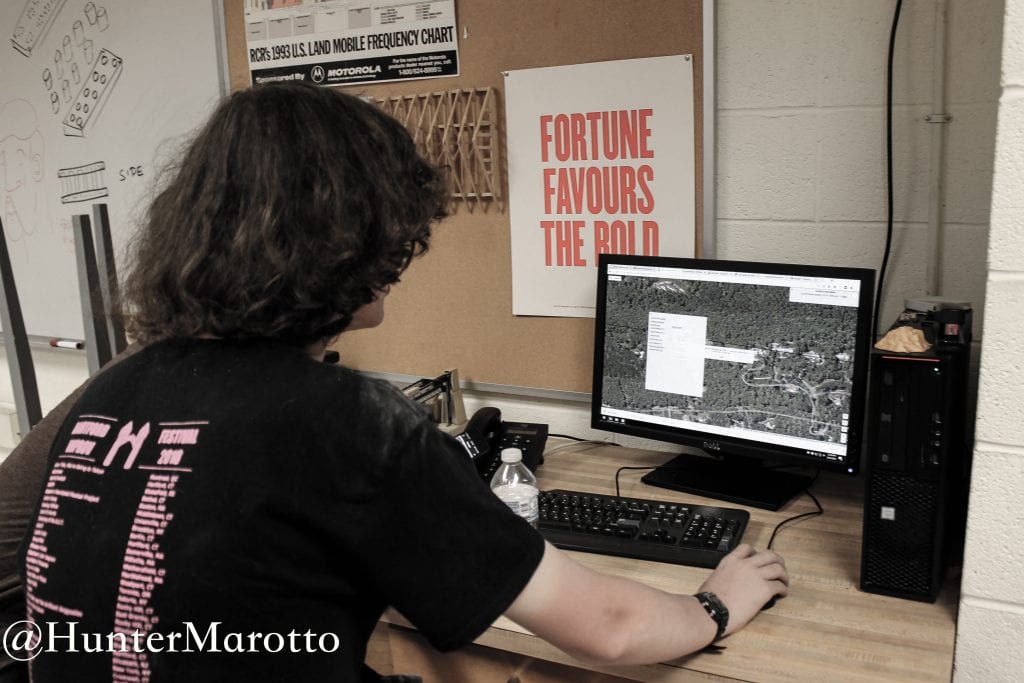
Tracking the weather balloon in the classroom. Photo credit: Hunter Marotto
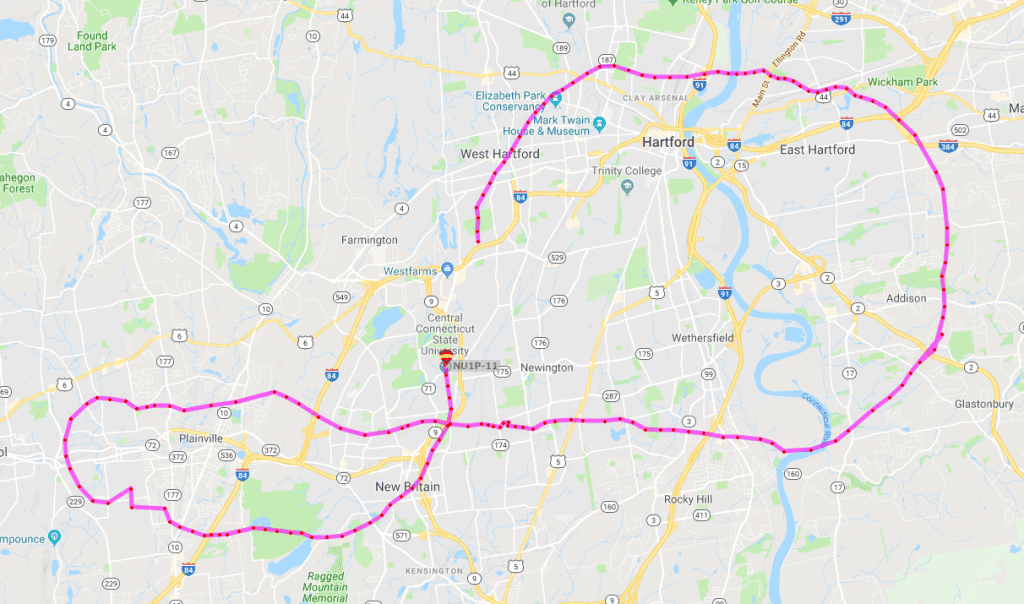
Path of the balloon. Courtesy of Anthony Truss

View of earth from the weather balloon. Courtesy of Anthony Truss

View of earth from the weather balloon. Courtesy of Anthony Truss
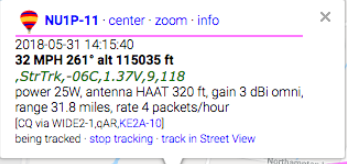
Burst altitude. Courtesy of Anthony Truss
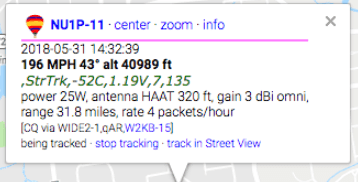
Fasted speed. Courtesy of Anthony Truss
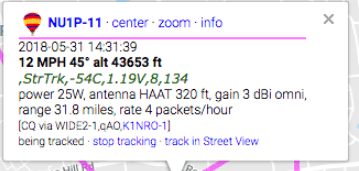
Coldest recorded temperature. Courtesy of Anthony Truss



